Weird Chinese Food You Probably Don’t Want to Try – or Accidentally Order!
Most people who have spent time in China will agree that Chinese food is great.

Rich in flavour, hugely diverse and surprisingly nourishing, it offers something for everyone – from spice lovers and sugar fiends to carnivores and vegetarians.
But not all dishes are foreigner-friendly.
In fact, the Chinese are famous for having one of the most diverse and *ahem* interesting palates of them all.
So, unless you’ve got a stomach of steel or a taste for adventure, you’ll want to learn a few words to ensure a smooth, surprise-free culinary experience.
After all, you don’t want to offend your hosts — or worse, the chef at your favourite restaurant.
Bu don’t panic!
We’re here to put a stop to food ordering faux pas. Here are the names of 23 weird Chinese foods you probably don’t want to try.
Weird Chinese Food | Why do the Chinese eat ‘everything’?
Weird Chinese Food | The Organs
Weird Chinese Food | The Feet, Claws and Everything Else
Weird Chinese Food | Insects
Weird Chinese Food | Miscellaneous Weird Chinese Foods
Weird Chinese Food | Reading the Chinese Menu
Weird Chinese Food | FAQ’s
Why do the Chinese Eat ‘Everything’?
A famous Cantonese saying goes, “Anything that walks, swims, crawls, or flies with its back to heaven is edible.”

Although this is a slight exaggeration, it’s true that the Chinese have a much more adventurous appetite than most of us.
As a traditionally irreligious nation, few rules and societal taboos exist to say what can and can’t be eaten.
And with a booming herbal medicine industry promoting the consumption of certain animal parts for good health, Chinese people have learnt to make the most of all that nature offers.
While many foreigners don’t get the Chinese appetite for adventure, the Chinese find it just as hard to understand why we’re so quick to deprive ourselves of what they see as great food.
Makes sense, right?
Now let’s tuck in…
Weird Chinese Food | The Organs
There’s almost no limit to what organs 内脏 (nèizàng) you’ll find on a Chinese menu:
- Intestines
- Hearts
- Stomach lining
It’s all there for the taking.
Basically, if it once lived, it can be stir-fried together with a few làjiāo and a splash of soy sauce.
Watch out for these popular dishes when you’re next skimming the menu to avoid ordering something you might regret:
- 牛肚 (niú dǔ) – tripe
- 猪肚 (zhū dù) – pork tripe
- 猪大肠 (zhū dàcháng) – pig intestine
- 鸭肠 (yā cháng) – duck intestine
- 牛百叶 (niú bǎiyè) – cow or ox stomach
- 牛尾 (niúwěi) – oxtail
- 鸭胗 (yā zhēn) – duck gizzard
- 鸡胗 (jī zhēn) – chicken gizzard
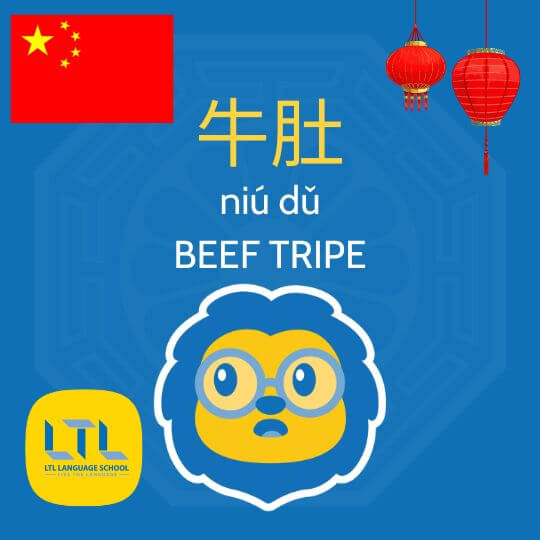
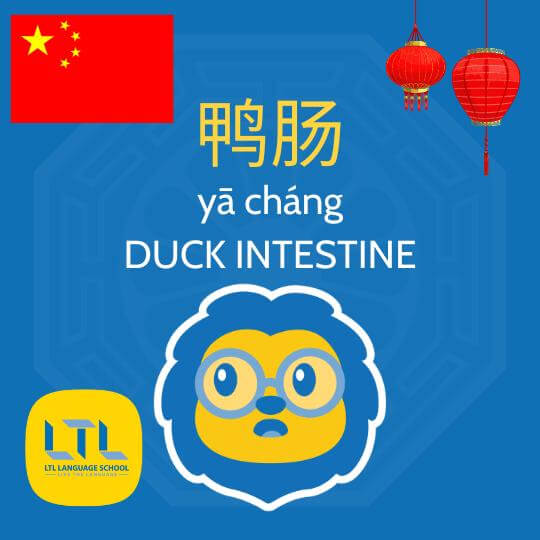
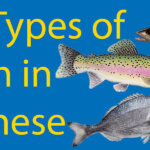
30+ Remarkable Types of Fish in Chinese
Fish in Chinese – Learn all the types of fish in Chinese with our practical encyclopedia of fish. BONUS: Sea creatures in Chinese the Chinese Dragonfish!
Weird Chinese Food | The Feet, Claws and More
Can we tempt you with a plate of chicken claws? Or are pig trotters more your thing?
Didn’t think so.
Meat eaters often think it’s safe to just point at anything containing the characters 鸡 (jī), 猪 (zhū) or 牛 (niú).
But that could be a big mistake!
All it takes is one character to spell the difference between ordering a delicious plate of 羊排 (yáng pái) and being served a steaming hot 羊头 (yáng tóu).
So, before you confidently select a dish based on seeing a hànzì you recognise, take note of these character combos that could easily catch you out:
- 鸡爪 (jī zhuǎ) – chicken feet
- 鸡头 (jī tóu) – chicken head
- 兔头 (tùtóu) – rabbit head
- 猪蹄 (zhū tí) – pig’s trotters
- 鸭脖 (yā bó) – duck neck
- 牛舌 (niúshé) – ox tongue
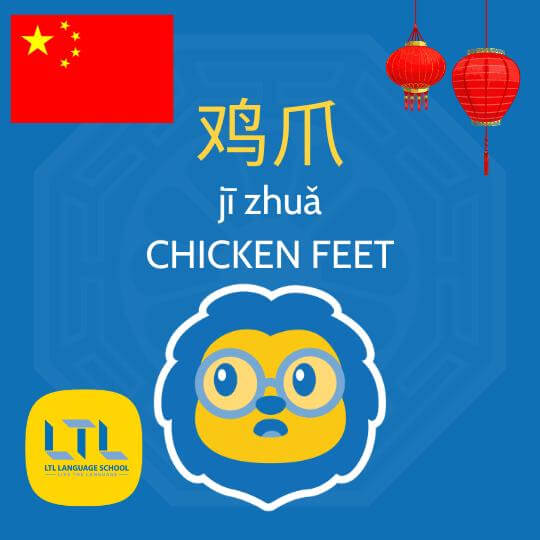

Weird Chinese Food | Insects
No Chinese food market would be complete without a selection of cremated critters.
You’ll find them all over China, but most famously at Wangfujing snack street in Beijing.
If you’re into BBQ’d bugs, you can’t miss it.
But you won’t only find edible insects on street food stalls…
Thanks to their nutritional benefits, they also feature on the menus of many high-end restaurants, where they’re made into delicious-looking dishes that look nothing like you’d expect.
So, unless you’re keen to try a silkworm, cicada or scorpion, keep an eye out for these characters, and don’t let the images fool you!
- 蝉蛹 (chán yǒng) – cicadas
- 蚕蛹 (cányǒng) – silkworms
- 蝎子 (xiēzi) – scorpion
- 蝗虫 (huángchóng) – grasshoppers
- 蟋蟀 (xīshuài) – crickets
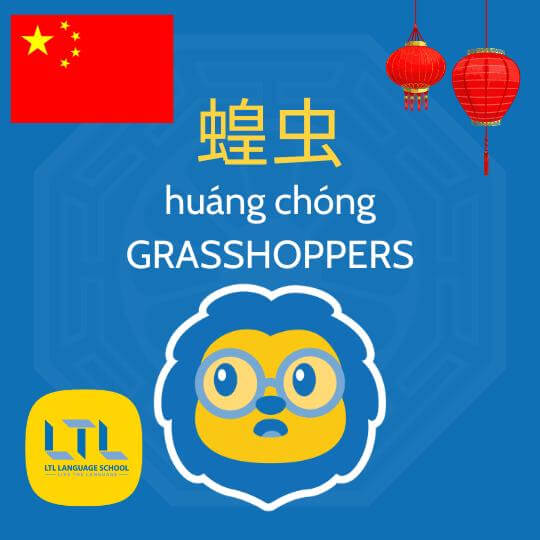
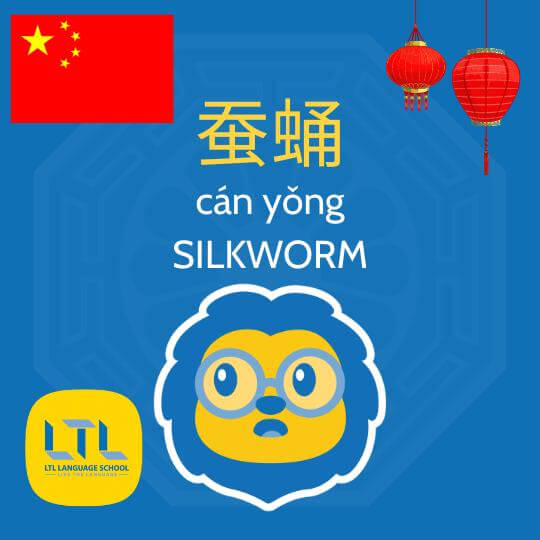
QUICKFIRE LESSON | Notice something similar about these Chinese characters? They all feature the same radical.
That radical is 虫. Can you spot it?
TOP TIP | Radicals are a great way to recognise the meanings of Chinese Hanzi you don’t know.
In this instance, you can make a fair guess, if you see the 虫 radical appear in a word, let’s take 蜘蛛 as an example, you can be fairly sure it is related to insects in some way, shape or form.
蜘蛛 by the way means spider.
BONUS | To learn more about radicals check out our guide to all 214 Chinese radicals here.
The Miscellaneous Menu of Weird Chinese Food
You’re probably feeling pretty smug right now if you’re a vegetarian.
You wouldn’t touch any of these dishes anyway, so nothing can catch you out… can it?
Don’t speak too soon!
Not all of China’s most bizarre dishes are meat-based. There are plenty of veggie-friendly snacks on offer, too.
While you’re more likely to come across these snacks on street food stalls than at restaurants, it’s good to store them in your dictionary of food terms because you never know when you might need them.
臭豆腐 (chòu dòufu) | Stinky Tofu
As the name suggests, you’ll smell stinky tofu long before you see it.
A staple at Chinese food markets, this fermented tofu snack exudes an odour that can only be compared to garbage, feet or – in the most extreme cases – rotten meat.
Stinky tofu looks just as unappealing as it smells.
The fermentation and cooking processes turn the tofu a dark shade of brown or – if from the delicacy’s famed hometown, Changsha – charred black.
Up for trying it? Check out this video first to see
SPOILER | If you don’t particularly like seeing people spit things out or wretch, maybe you’d be best not watching!
皮蛋 (pí dàn) | Century Egg
Another foul-smelling, odd-looking snack, 皮蛋 is a duck egg that’s been preserved in a mixture of salt, lime and ash.

This alkaline fermentation process changes the PH levels of the egg, turning the white a translucent black and the yolk a dark green.
Rest assured, though it might smell like it, 皮蛋 isn’t actually 100 years old.
BONUS | Want to discover more about the Century Egg (we know you do deep down), we’ve of course got an article for that!
毛蛋 (máo dàn) | Foetus Egg
This one is by no means vegetarian (or anyone) friendly. It’s so extreme that we won’t go into detail because its name says enough.
Just know that unless you have a particularly strong stomach or desire to immerse yourself in the weirdest of Chinese cuisine, it’s best to steer clear and stick to unfertilised eggs.
Yes, you read correctly.
海参 (hǎi shēn) | Sea Cucumber
Staggering demand for this popular sea creature makes it by far the most expensive delicacy on the list, starting at around 200 CNY per kg (that’s about 30USD).
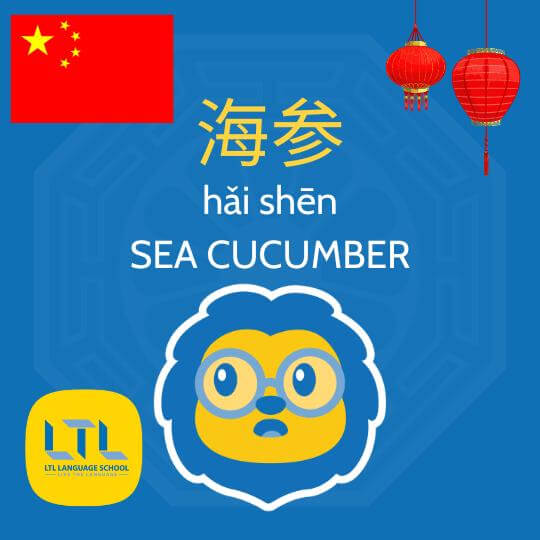
While it might not be the most surprising snack on the list, it’s one to avoid from an environmental point of view.
Mass consumption of sea cucumbers is thought to threaten the health of our oceans, which they play a vital role in maintaining.
But that hasn’t affected demand.
There’s now a booming black-market trade for sea cucumbers, as smugglers sidestep strict regulations to protect the species.
Our advice? Be a conscious diner and try some of China’s regular cucumber dishes instead.
Reading a Chinese Menu

If you’re not familiar with the Chinese menu, you’ll be pleased to know they often follow a very logical structure.
Separate sections based on dish or food type make it much easier to flick through and find what you’re looking for, even without the pictures.
Menus typically begin with the cold food section, where you’ll find a list of appetisers.
They then move on to meat, vegetables – or a combination of both – and rice or noodle dishes.
Sadly, there’s no section called ‘dishes you probably don’t want to try’, which is why it’s a good idea to broaden your food vocabulary before you dig in.
BONUS | Here’s a helping hand to get you started. Our Chinese Menu cheat sheet which covers all the Chinese food you’ll need (more of the regular stuff rather than feet, claws and lungs)!
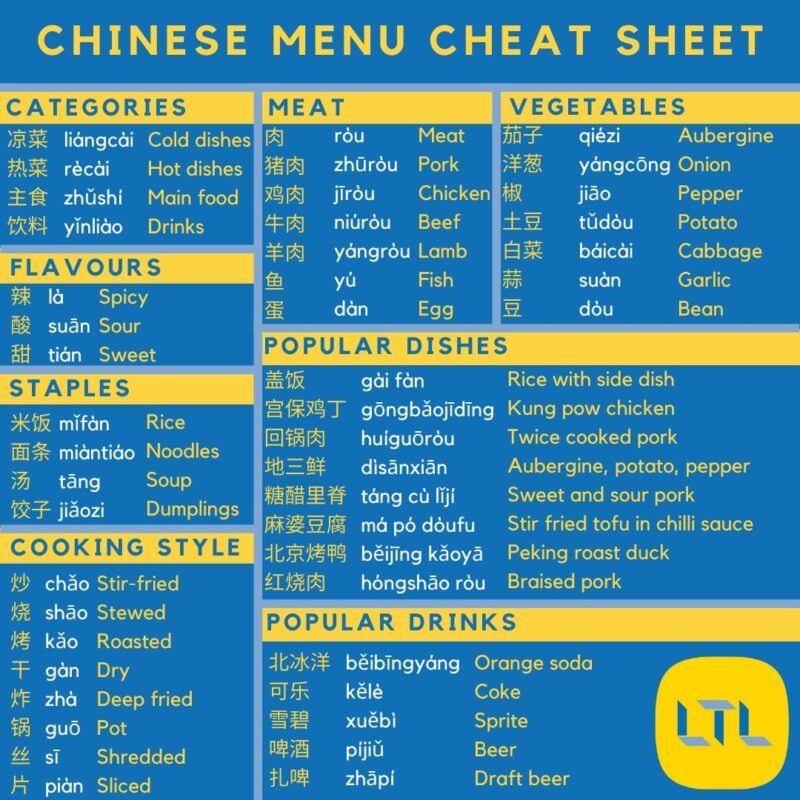
There you have it, your guide to all things weird and wonderful in the Chinese restaurant.
Good luck!
Would you try any of the dishes on the list? Which ones? Let us know in the comments.
Weird Chinese Food | FAQ’s
What is 毛蛋?
This is a foetus egg and is eaten by some in China.
WARNING | Just know that unless you have a particularly strong stomach or desire to immerse yourself in the weirdest of Chinese cuisine, it’s best to steer clear and stick to unfertilised eggs.
What is the smelliest Chinese food?
There are a couple but the one that stands out would be Stinky Tofu.
As the name suggests, you’ll smell stinky tofu long before you see it.
A staple at Chinese food markets, this fermented tofu snack exudes an odour that can only be compared to garbage, feet or – in the most extreme cases – rotten meat.
Stinky tofu looks just as unappealing as it smells.
The fermentation and cooking processes turn the tofu a dark shade of brown or – if from the delicacy’s famed hometown, Changsha – charred black.
What are some of the weirdest Chinese foods?
China is well known for eating as much of the animal as possible.
Here are some that you might come across in China.
鸡爪 (jī zhuǎ) – chicken feet
鸡头 (jī tóu) – chicken head
兔头 (tùtóu) – rabbit head
猪蹄 (zhū tí) – pig’s trotters
鸭脖 (yā bó) – duck neck
牛舌 (niúshé) – ox tongue
What organs will appear in Chinese cuisine?
To be honest there is no limit but three of the most popular are:
Intestines
Hearts
Stomach lining
Want more from LTL?
If you wish to hear more from LTL Mandarin School why not join our mailing list. We give plenty of handy information on learning Chinese, useful apps to learn the language and everything going on at our LTL schools!
Sign up below and become part of our ever growing community!
BONUS | Want to study Chinese with us at LTL Singapore you can discover our group classes and individual classes too.


 Hi, my name is Greta. I am from Italy and I work as a student advisor. Please contact me if you wish to come and study with us!
Hi, my name is Greta. I am from Italy and I work as a student advisor. Please contact me if you wish to come and study with us!




